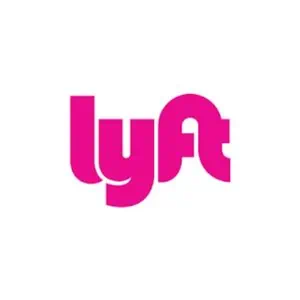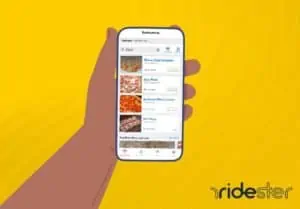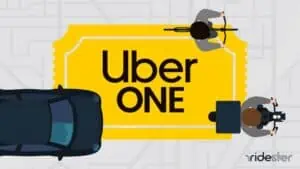Key Takeaways
- Lyft Line offered shared rides, now rebranded as Lyft Shared.
- Available in select cities, it provided a cheaper, carpool-like service.
- Lyft Line rides were 10-20% cheaper than regular Lyft rides.
- Booking a Lyft Line was as easy as booking any Lyft ride.
What Was Lyft Line?
Lyft Line, now known as Lyft Shared, was a rideshare option offered by Lyft that functioned similarly to carpooling. Instead of booking a private ride, passengers could share their journey with others heading to the same destination, allowing for a discounted fare.
This service offered a middle ground between the cost of a private Lyft ride and public transportation, providing a more affordable yet comfortable alternative.
Passengers would request a ride through the Lyft app by entering their pickup and drop-off locations, and the app could match them with other users on a similar route.
This service aimed to reduce the number of cars on the road by pooling riders together, making it an economical and environmentally friendlier option.
How Much Did Lyft Line Cost?
Lyft Line, designed to be more economical by allowing multiple riders to share a journey, typically offered rides at a cost 10-20% lower than standard Lyft rides.
This reduction in price was due to the shared nature of the service, with passengers splitting the cost.
While factors such as surge pricing could affect overall rates, a Lyft Line ride was always cheaper than a private Lyft ride, even if no additional passengers were picked up during the trip.
The fare quoted at the beginning of the ride remained fixed, ensuring passengers didn’t face unexpected charges.
For an accurate estimation of potential Lyft rates, including Lyft Line, users were advised to utilize Lyft’s official fare estimator tool.
Related: How much does Lyft cost?
Where Was Lyft Line Available?
Lyft Line was primarily available in larger cities, such as Washington DC and San Jose, where the full range of Lyft’s services could be offered.
Its availability was not universal, with certain areas lacking the option due to various factors. However, Lyft continuously evaluated and expanded its services, suggesting that areas without Lyft Line might gain access in the future.
To check if Lyft Line (Lyft Shared) is available in a specific area, users were encouraged to visit the Uber cities page for service availability and fare estimates.
How Does Lyft Line Compare to Other Ride Services?
Lyft Line, compared to other ride-sharing options, offered a budget-friendly alternative by allowing passengers to share rides, though it came with certain limitations like fixed routes and restrictions on multiple stops or excess luggage.
- Lyft Line vs. Regular Lyft: Regular Lyft rides offer more privacy, flexibility for multiple stops, and the ability to carry more luggage, making them suitable for airport trips or when traveling with several passengers. Lyft Line, while cheaper, required passengers to follow a set GPS path without deviations.
- Lyft Line vs. UberX Share: UberX Share, Uber’s equivalent of Lyft Line, provided a similar carpooling service. The main differences included a slightly longer waiting period for passengers by UberX Share drivers (2 minutes) compared to Lyft Line (1 minute), and Uber’s surge pricing occasionally being higher than Lyft’s.
- Lyft Line vs. Zimride: Zimride, the precursor to Lyft, focused on connecting riders and drivers with similar personal interests for long-distance trips, primarily within universities. It was sold to Enterprise Rent-A-Car in 2013 and ceased operations in 2020.
Each service catered to different needs: Lyft Line for cost-effective, shared rides; Regular Lyft for more personalized trips; Uber Pool as a direct competitor with slight differences in wait times and surge pricing; and Zimride for social, long-distance sharing.
How to Book a Lyft Line Ride
To book a Lyft ride, including the now-rebranded Lyft Shared, follow these simple steps, applicable for both mobile and web platforms:
How to Book a Lyft Line Ride Using the App
- Open the Lyft app and log in or create an account.
- Tap on “Search Destination” and enter where you’re going.
- Choose your ride type; for a shared ride, select “Lyft Shared.”
- Tap on “Select Lyft” to proceed.
- Confirm your pickup location, then tap “Confirm and Request.”
- Stay notified via the app for your driver’s details and arrival time.
How to Book a Lyft Line Ride Using the Web
- Visit the Lyft website and either sign in or create a new account.
- Input your pickup and drop-off locations.
- Select “Ride details” to choose your preferred ride type, like the former Lyft Line option.
- Click “Request a Lyft ride” to book.
- Lyft will send updates and estimates to your phone via text.
Note: When booking through the web, payment is accepted only via credit card, excluding options like Apple Pay, Google Pay, and PayPal.
How Did Driving For Lyft Line Work?
Driving for Lyft Line was a straightforward process for drivers using the Lyft driver app. Requests for Lyft Line/Shared rides appeared marked as such, indicating the possibility of picking up multiple passengers.
Initially, Lyft Line could accommodate up to three or four passengers, depending on the vehicle size, but current Lyft Shared rides limit to two passengers, with updated safety guidelines in place.
Drivers did not have the option to choose between Lyft Line or Regular Lyft rides. The system expected drivers to accept rides as they came, with acceptance rates, driver ratings, and ride streaks potentially affected by declined rides.
However, Lyft made exceptions for declining shared rides without penalty through at least the end of 2021 to maintain driver safety during the pandemic, a policy subject to future updates.
Regarding compensation, Lyft Line rides typically lasted 10-15% longer than regular Lyft rides, resulting in correspondingly higher earnings for drivers.
Additionally, the multiple pickups associated with Lyft Line rides offered drivers the chance to earn more in tips from the various passengers.
Wrapping Up
Lyft Line was an excellent option for people who liked the idea of ridesharing but wanted to save a little bit of money. It may be gone, but, fortunately for Lyft riders, Lyft Shared is a new option that offers the same great level of service.






